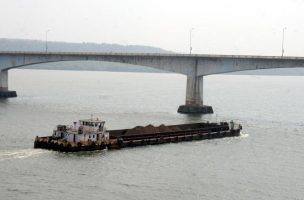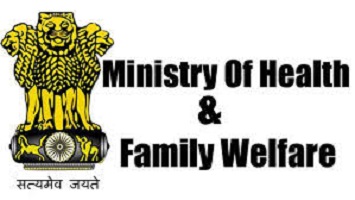
Minister of State for Shipping Shri Pon Radhakrishnan has informed that out of the 111 National Waterways (NWs) declared under the National Waterways Act, 2016, 13 NWs are operational for shipping and navigation and cargo/passenger vessels are moving on them. Inland Waterways Authority of India (IWAI) has put in place a structured management and monitoring system with competent and experienced professionals, to ensure that the projects on NWs are qualitatively executed in a time bound manner. In addition, the progress of execution of projects is regularly reviewed at various levels within IWAI and the Government.
The details of operational NWs are as follows:
Details of Operational National Waterways
| Sl. No. | National Waterway (NW) No. | Length (km) | Location (S) |
| 1. | NW-1: Ganga-Bhagirathi-Hooghly River System (Haldia – Allahabad) | 1620 | Uttar Pradesh, Bihar, Jharkhand, West Bengal |
| 2. | NW-2: Brahmaputra River (Dhubri – Sadiya) | 891 | Assam
|
| 3. | NW-3: West Coast Canal (Kottapuram – Kollam), Champakara and Udyogmandal Canals | 205 |
Kerala |
| 4. | NW-4: Phase-1development of the stretch Muktiyala to Vijyawada of river Krishna | 82 | Andhra Pradesh |
|
5. 6. 7.
8. |
Waterways in Maharashtra
i) NW-10 (Amba River) ii) NW-83 (Rajpuri Creek) iii) NW–85 (Revadanda Creek – Kundalika River System) iv) NW-91 (Shastri river–Jaigad creek system) |
45 31 31
52 |
Maharashtra
|
|
9.
10.
|
National Waterways in Goa
NW-68 – Mandovi – Usgaon Bridge to Arabian Sea (41 km) NW-111 – Zuari– Sanvordem Bridge to Marmugao Port (50 km). |
41
50 |
Goa |
|
11. 12. |
National Waterways in Gujarat
NW-73- Narmada river- NW-100- Tapi river |
226 436 |
Gujarat &Maharastra |
| 13. | Sunderbans Waterways (NW-97): Namkhana to AtharaBankiKhal in West Bengal. | 172 | West Bengal
(through Indo-Bangladesh Protocol Route) |
Inland Water Transport (IWT) mode is widely recognized as environment friendly and cost effective mode of transport. As per RITES Report of 2014 on Integrated National Waterways Transportation Grid, some of the important benefits of IWT mode compared to rail and road transportation are fuel efficiency and cost savings as given below:
- 1 Litre of fuel moves 24 tonne – km on road, 95 tonne-km on rail and 215 tonne-km on IWT.
- Comparative cost for movement of freight.
| Mode | Railways | Highways | IWT |
| Freight (Rs./T.km) | 1.36 | 2.50 | 1.06 |
In addition to the economic and environmental benefits, IWT aims to create for the shippers and logistic players, an alternative to the two dominant modes of transport viz. road and rail.







Leave a Reply
You must be logged in to post a comment.